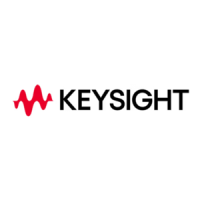Appendix
604
7.2 Creating Arbitrary Waveforms
The Keysight 81150A allows you to create arbitrary waveforms of up to 512K
points (524288 points) (81160A 1ch: 262144 points; 81160A 2ch: 131072
points), and provides seven built-in examples of arbitrary waveforms. You
can create an arbitrary waveform from the front panel, or you can use the
Keysight BenchLink Waveform Builder software provided on the CD-ROM
included with the Keysight 81150A / 81160A. The Keysight BenchLink
Waveform Builder software allows you to create arbitrary waveforms using
a graphical user interface on your PC, and then download them into the
Keysight 81150A / 81160A. You can also capture waveforms from your
Keysight oscilloscope and import them into BenchLink.
For most applications, it is not necessary to create an arbitrary waveform
with a specific number of points since the function generator will repeat
points (or interpolate) as necessary to fill waveform memory. For example, if
you specify 100 points, each waveform point will be repeated an average of
16,384 / 100 or 163.84 times. For the 81150A / 81160A, you do not have to
change the length of the waveform to change its output frequency. All you
have to do is create a waveform of any length and then adjust the function
generator’s output frequency. However, in order to get the best results (and
minimize voltage quantization errors), it is recommended that you use the
full range of the waveform DAC.
When entering waveform points from the function generator’s front panel,
you are not required to enter the points at evenly-spaced intervals in time.
You can always add additional points as needed where the waveform is
more complex. From the front panel only, you can also use linear
interpolation to smooth the transition between waveform points. These
features make it possible to create useful arbitrary waveforms using a
relatively small number of points.
With the 81150A, you can output an arbitrary waveform to an upper
frequency limit of 120 MHz (81160A: 330 MHz). However, note that the
useful upper limit is usually less due to the function generator’s bandwidth
limitation and aliasing. Waveform components above the function
generator’s -3 dB bandwidth will be attenuated.

